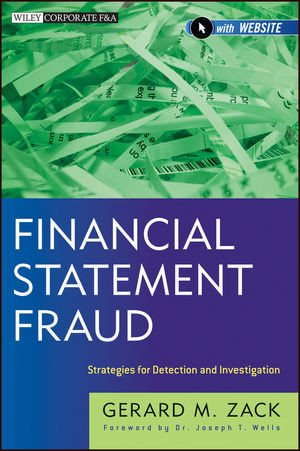

Most ebook files are in PDF format, so you can easily read them using various software such as Foxit Reader or directly on the Google Chrome browser.
Some ebook files are released by publishers in other formats such as .awz, .mobi, .epub, .fb2, etc. You may need to install specific software to read these formats on mobile/PC, such as Calibre.
Please read the tutorial at this link: https://ebookbell.com/faq
We offer FREE conversion to the popular formats you request; however, this may take some time. Therefore, right after payment, please email us, and we will try to provide the service as quickly as possible.
For some exceptional file formats or broken links (if any), please refrain from opening any disputes. Instead, email us first, and we will try to assist within a maximum of 6 hours.
EbookBell Team

4.3
8 reviewsFinancial statement fraud is one of the most costly types of fraud and can have a direct financial impact on businesses and individuals, as well as harm investor confidence in the markets. While publications exist on financial statement fraud and roles and responsibilities within companies, there is a need for a practical guide on the different schemes that are used and detection guidance for these schemes. Financial Statement Fraud: Strategies for Detection and Investigation fills that need.
Straightforward and insightful, Financial Statement Fraud provides comprehensive coverage on the different ways financial statement fraud is perpetrated, including those that capitalize on the most recent accounting standards developments, such as fair value issues.Content:
Chapter 1 Introduction to Revenue?Based Financial Reporting Fraud Schemes (pages 1–7):
Chapter 2 Timing Schemes (pages 9–32):
Chapter 3 Fictitious and Inflated Revenue (pages 33–45):
Chapter 4 Misclassification Schemes (pages 47–55):
Chapter 5 Gross?Up Schemes (pages 57–61):
Chapter 6 Improper Capitalization of Costs (pages 63–83):
Chapter 7 Asset Valuation Schemes (pages 85–116):
Chapter 8 Fair Value Accounting (pages 117–128):
Chapter 9 Shifting Expenses to Future Periods (pages 129–139):
Chapter 10 Omissions and Underreporting of Liabilities (pages 141–154):
Chapter 11 Consolidations and Business Combinations (pages 155–169):
Chapter 12 Financial Reporting Fraud as a Concealment Tool (pages 171–175):
Chapter 13 Financial Statement Fraud by Not?for?Profit Organizations (pages 177–185):
Chapter 14 Disclosure Fraud (pages 187–196):
Chapter 15 Detecting Financial Statement Fraud (pages 197–207):
Chapter 16 Financial Statement Analysis (pages 209–213):
Chapter 17 Ratio Analysis (pages 215–226):
Chapter 18 Other Detection Procedures (pages 227–237):
Chapter 19 Fraud or Honest Mistake? (pages 239–244):
Chapter 20 Assessing (or Minimizing) Auditor Liability (pages 245–267):